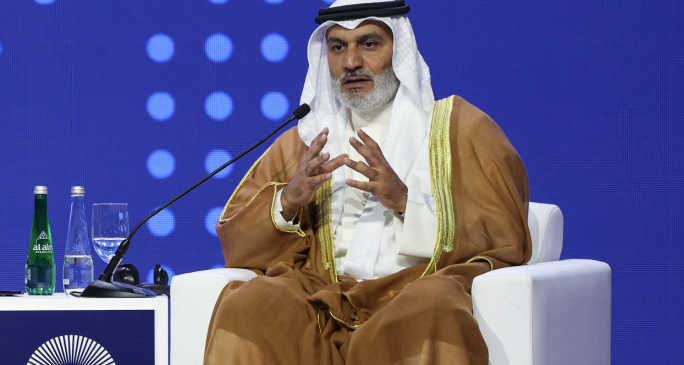|
|
TODAY.AZ / Business
Europe’s new energy scenarios and role of Azerbaijan
08 April 2014 [10:45] - TODAY.AZ
 By Arthur Bayhan
By Arthur BayhanThe Crimean crisis has made Europe suddenly aware of how dependent it is on the gas supplies from Russia. Currently, the EU covers more than 60 percent of its gas consumption through import. The Paris based International Energy Agency (IEA) expects that the consumption in the EU member states will grow and the share of imports in 2035 will climb to more than 80 percent. Russia is at a third of EU imports by far the more important gas supplier - and the Crimean crisis has shown the risks of this dependence. In the wake of the Crimean crisis, all the heads of the EU member states announced a new look at the entire energy policy.
The current debates are concentrated on two possible scenarios:
1. Shale gas fracking in the resource potential EU member states.
2. Identify other potential resource countries for gas supply.
The debates are not focus either or scenario but rather on both of the options.
Shale Gas Fracking Scenario
After Russia has incorporated the Crimean peninsula, the debate, within Europe, has taken a momentum to look for any alternatives including the fracking for shale gas. Shale gas fracking produces large amounts of a mixture of water, sand and chemicals are forced into the well to blow cracks in underground rock layers.
The question is whether the shale gas can save Europe from the energy trap? The Proponents of this option point to the United States where the fracking promotion has indeed led within a few years to offer a glut. Experts predict that the US will soon be independent of natural gas imports. In Europe, large deposits are assumed, but the uncertainty of these estimates is still exist. It would be a number of sample wells required to verify them. One of the studies carried out on this has prized the shale gas deposits in Europe around 13 trillion cubic meters. More than half of them are likely to be stored in Poland and France. So, shale gas could make Europe independent of the Russian import on many decades.
So far, most of the countries in Europe have been blocking the fracking for environmental reasons of the delivery method. They are afraid of, the chemical cocktail could contaminate groundwater. Fracking is "a technology with enormous potential risk", their environmental impacts are so far "not been sufficiently clarified and neither it is clarified whether the exploitation of economically and commercially acceptable costs would be possible.
Identify other Potential Resource Countries for Gas Supply
The other alternative resources countries vis-à-vis Russia might be Azerbaijan, Turkmenistan, Iran, and Kurdish autonomous region of Iraq.
Turkmenistan. According to a study carried out by Gaffney Cline & Associates, an oil advisory firm, the South Yolotan-Osman field in the southeast of Turkmenistan contains between 4 trillion and 14 trillion cubic meters of gas. This estimate is three times the European Union's annual consumption of the fuel. Turkmenistan is currently supplying most of its gas to Russia -- about 50 billion cubic meters (bcm) a year, which is mostly resold to Ukraine. It further sells around 20 bcm to China which is expected to increase up to 90 bcm in the future, and 10 bcm to Iran. Furthermore, there is another project planned for, so-called, Turkmenistan, Afghanistan, Pakistan and India (TAPI). In order to feed gas to all these pipelines/projects Turkmenistan has to increase the production of its gas. This might be difficult as Turkmenistan does not allow the international oil and gas companies into the country to extract and neither provides them favorable conditions.
Iran has the second largest gas reserves. Once the relations between the West and Iran are normalized Iran might be another option for the EU to look at. Iran has the world's second largest gas reserves after Russia. The US Energy Information Administration estimated Iran's proved gas reserves as of the start of 2013 as 1,187 trillion cubic feet (33.6 trillion cubic meters). The Iranian gas might be interesting in case the relations between Iran and the West are tremendously improved as they are today and its hostile policy vis-à-vis Israel is changed.
Role of Azerbaijan as Resource Country to Supply Gas to Europe
The best option for the EU would be obviously to create a gas corridor with Azerbaijan. The role of Azerbaijan in supplying gas to Europe seems to be more likely due to the following reasons.
First, since its independence Azerbaijan has been developing strong socio-economic and political relations with the western countries, including the US, Israel, Europe as well as with Turkey the latter is proposed to be used as a transit country of the gas from Azerbaijan on to Europe. Therefore, the EU geopolitical realignment with Azerbaijan is more anticipated than with Turkmenistan and Iran.
Secondly, Azerbaijan has already signed an agreement with the Turkish government for the construction of the Trans-Anatolian Gas Pipeline (TANAP) to carry natural gas from Azerbaijan via Georgia to Turkey and on to Europe.
Aside from TANAP, other bids to carry Shah Deniz II gas to the EU customers which includes the Trans-Adriatic Pipeline (Greece- Bulgaria, Albania-Italy). This project could be expanded to accommodate further volumes from Azerbaijan's new gas blocks such as Absheron, Babek, Nakhichevan, Umit and Zafar-Mashal. Azerbaijan's gas production, which will target the Turkish and European markets in the next decade, is estimated to reach 30 billion cubic meters per year (bcm/y) by 2015 and 50 bcm/y by 2025. In terms of the commitment all the stakeholders including the resource country, transit countries and upstream operators are aligned and engaged together to materialize this important project.
In the last 10 year the price in the gas market has declined continually due to the discovery and extraction of shale gas in the United States. This is an epoch-making revolution and made in a short time a country like the United States from gas importer to a gas supplier.
Unfortunately, the energy prices of Russian gas in Europe are still very high as in past decades Europeans had entered into long -term supply based on the principle "take or pay " - Remove the gas or pay without gas supply anyway. Although such contracts are in principle useful as it secures the agreement between buyer and supplier of gas with the long-term investment in gas production and pipelines, but, they commit the buyers to purchase gas for a long term in higher prices than those at the market.
In terms of commitment of resource countries companies' the Trans-Adriatic Pipeline will need a capital investment around US $40 billion. First, the EU is the biggest client of the Russian Gazprom and Gazprom is charging very high prices for a long term. Second, the Trans-Adriatic Pipeline will not only reduce the EU dependence on Russia but also it will reduce substantially the gas prices for the EU consumers. Third, any additional flows of gas coming from the Caspian Sea will undercut Russian dominance in Europe.
Arthur Bayhan is senior policy advisor on economic growth and competitiveness with more than 20 years of projects implementation experience in the areas of investment and trade facilitation, sector competitiveness, and public-private partnership development. He worked as chief of party for USAID, head of private sector development at OECD, and as advisor at the EU Commission. He is engaged in the highest levels of governments and the private sector to improve framework conditions for business enabling environments including competitiveness, innovation, trade and investment facilitation, developed sustainable economic institutions in Central Asia, Caucasia, Russia and in South- and Southeast Asia. He is a German national and can be reached at: [email protected].
/AzerNews/
URL: http://www.today.az/news/business/132467.html
 Print version
Print version
Views: 1690
Connect with us. Get latest news and updates.
See Also
- 16 September 2025 [14:55]
Azerbaijanis buy 77 properties in Turkiye in August 2025 - 15 September 2025 [15:00]
Restrictions on ship movement in Azerbaijani ports lifted after weather stabilization - 14 September 2025 [14:25]
Chairwoman: Insurance sectors of Turkic states to benefit from new union - 14 September 2025 [13:59]
OPEC chief: Oil to remain vital despite ‘peak oil’ predictions - 14 September 2025 [12:37]
Insurance sector assets up 12% in a year, surpassing 2.1 billion manats - 13 September 2025 [16:50]
Next meeting of Azerbaijan’s Economic Council held under Prime Minister’s leadership - 13 September 2025 [14:21]
Azerbaijan and Iran to host reciprocal cultural days - 13 September 2025 [13:55]
Chinese delegation explores cooperation on Trans-Caspian International Transport Route - 13 September 2025 [11:40]
ADY expands train services on Absheron Circular Route - 13 September 2025 [10:35]
SOCAR Türkiye and TANAP hold board meetings in Istanbul
Most Popular
 OPEC chief: Oil to remain vital despite ‘peak oil’ predictions
OPEC chief: Oil to remain vital despite ‘peak oil’ predictions
 Explosion in Madrid from suspected gas leak kills 1 person, injures 25
Explosion in Madrid from suspected gas leak kills 1 person, injures 25
 Russia displays military might with hypersonic missiles and bombers in drills
Russia displays military might with hypersonic missiles and bombers in drills
 Azerbaijan joins CIS Customs Law Enforcement Meeting in Almaty
Azerbaijan joins CIS Customs Law Enforcement Meeting in Almaty
 Ukraine considers counter to Russian drones with mobile service limitations
Ukraine considers counter to Russian drones with mobile service limitations
 Baku, Astana strengthen ties in law enforcement training
Baku, Astana strengthen ties in law enforcement training
 Chairwoman: Insurance sectors of Turkic states to benefit from new union
Chairwoman: Insurance sectors of Turkic states to benefit from new union
